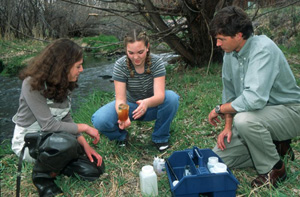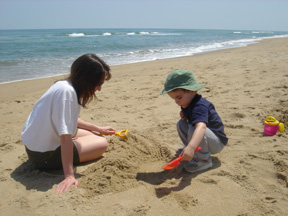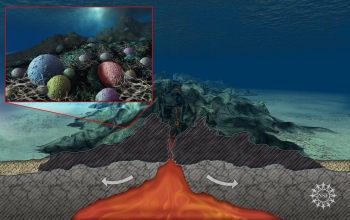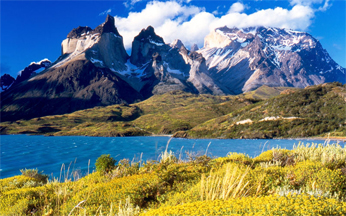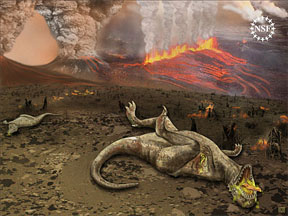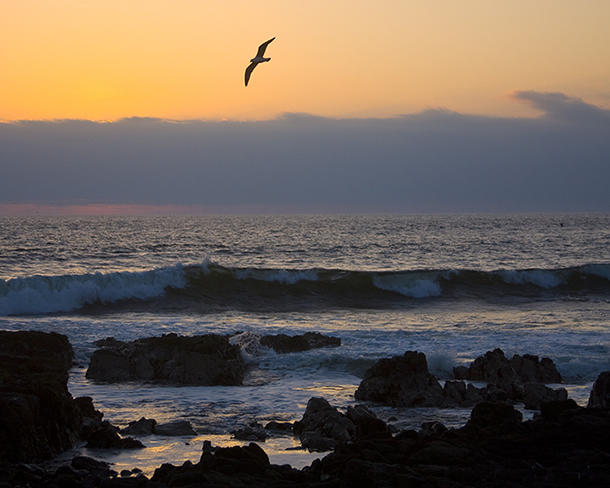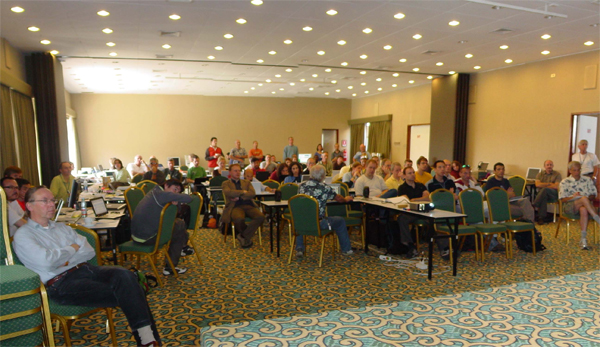Click on image for full size
Courtesy of UCAR
The Scientific Process
How does scientific research actually work? How do scientists actually come up with explanations for the things that happen around us? The first step in the scientific process occurs whenever a scientist observes something happening that is both interesting and unexplained, like a new light in the sky, a set of tracks in the soil that don't look like anything that's been seen before, or maybe a strange reaction when two chemicals are added together in a beaker. When that happens, a scientist will usually begin to think about how the new observation might be explained (scientists are generally pretty curious).This is when the process outlined in the scientific method begins--the scientist will begin to put together a hypothesis or guess that might explain the unusual event he/she has just observed, and then based on that hypothetical explanation he/she will begin to make predictions. For instance, the hypothesis that he/she has come up with might predict that the observed phenomenon might occur again at a certain time, or under certain conditions. The final step in the scientific method is then to test the predictions, and see if the hypothesis is supported or proven wrong. If the hypothesis is proven wrong, he/she will start the process again, and try to come up with a new hypothesis that explains all of the observations. It is important to note that some scientists work with multiple hypotheses at the same time in attempt to explain ideas.
Once the scientist has a hypothesis that explains all the observations, and makes predictions that can be proven true, he or she will tell other scientists about the new discovery. In modern science, this is done by presenting his/her work during a talk and/or in an article describing the discovery in a scientific journal. A scientific journal is like a magazine, read by other scientists. See Science for an example of a modern scientific journal. Scientists submit their articles to scientific journals, and undergo a “Peer Review” process before publication to ensure that the scientific results reported are correct, that a good scientific process was followed, that the literature is adequately referenced and that the article is well written. Scientific peers are other scientists who do similar research, and understand all the research that the first scientist did. Sometimes, articles submitted by scientists are not accepted for publication in a journal because the peer reviewers feel that the article does not represent accurate results, did not follow sound scientific processes, or is not well written.
Once a paper is published, a form of peer review continues as other scientists test the new hypothesis and agree that it is correct. After repeated testing of sound hypotheses over decades by many scientists using many different approaches, a hypothesis can become accepted as a theory. In some ways this is the foundation of scientific research.
It's important to note that agreement on a particular hypothesis sometimes takes a long time--years, or even decades. Evolution, plate tectonics, the Big Bang, and climate change are all things that were first proposed as hypotheses long ago. Now considered theories, they are all still being explored and debated by scientists today.


